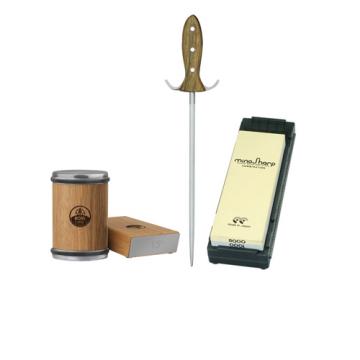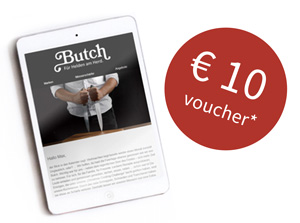
Our Knife Sharpeners
No matter how high the HRC value of a knife may be, no matter how premium and expensive it is: Eventually, the time will come when a knife no longer performs as desired. Then it's time for you to give your knife the fullest attention: It's time to resharpen! For some, it's a nuisance, an unpleasant task. Others, however, see it as a meditative activity. No matter how you feel about it, your knives will reward you for this effort with longevity and enthusiasm.
For beginners and professionals, we have suitable tools in our Butch Store that will help you restore the desired sharpness to your knives:
Sharpening Stones
Sharpening stones are the most professional way to get your knives sharp again. It requires a bit of practice, but then … It is important to choose the right grit, prepare the sharpening stone, and maintain the correct angle throughout the sharpening process.
Finding the right grit among the different options is quite simple. The lower the number, the coarser the grit. You should only use a grit below 800 for very dull or damaged edges. They remove a lot of material from the edge and leave a rough surface. A grit of around 1000 - 2000 can be used universally for sharpening and polishing. Grits of 3000 and above are best suited for the final polishing of the edges. Although sharpening takes a bit longer, a finely polished blade glides even more easily through the cutting material. Preparing the sharpening stones is not a complicated matter. You should soak the sharpening stones in a water bath for about 15 – 20 minutes and let them absorb water. A small but important tip from us: never sharpen knives on dry sharpening stones. This causes scratches rather than a sharp blade. During sharpening, it is advisable to have a bowl of water ready to repeatedly moisten the sharpening surface with water.
Now it gets a bit more complicated: the sharpening angle. It is important to maintain the correct angle during sharpening, from the tip to the edge. You should practice this a bit. If you have concerns, we recommend a sharpening guide. This is attached to the back of the knife blade and helps you maintain the correct angle during the sharpening process.


















